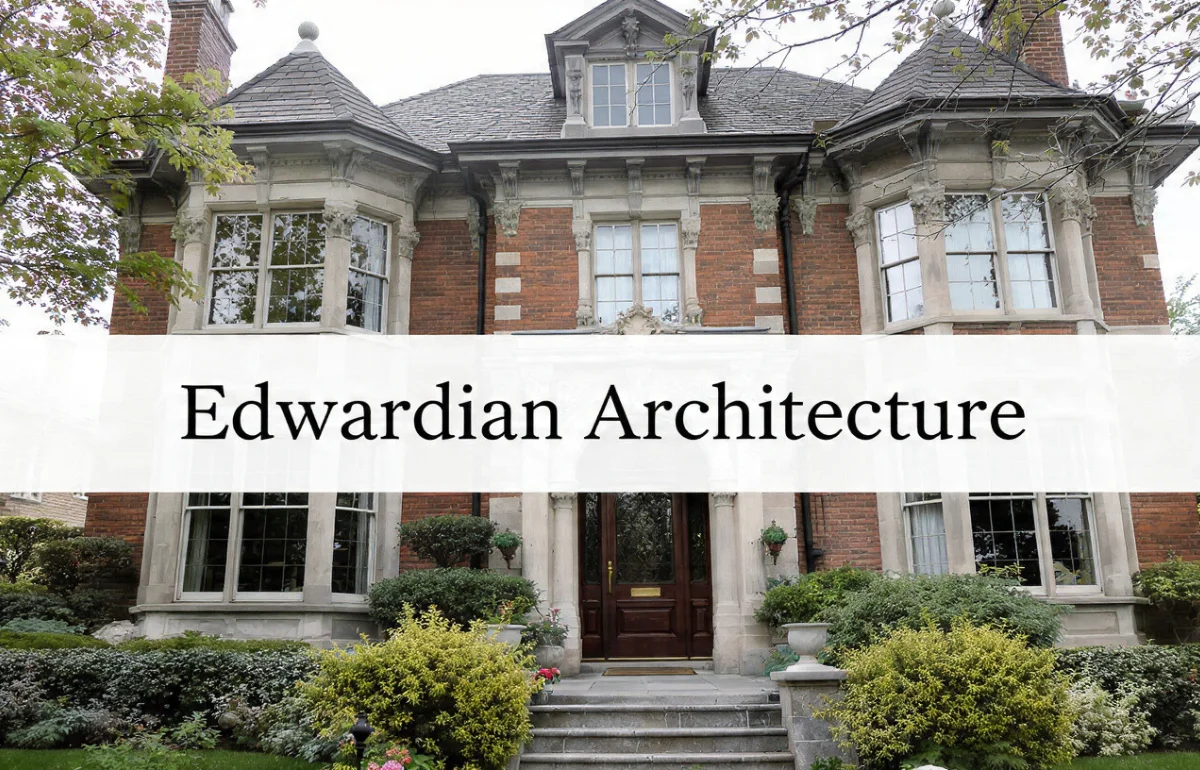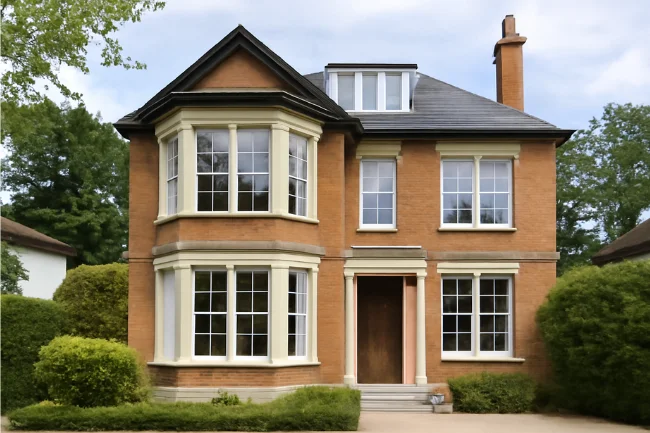
Edwardian architecture refers to the distinctive design style that emerged during the reign of King Edward VII, spanning from 1901 to 1910. This architectural movement is known for its elegant yet practical aesthetic, marking a shift from the ornate Victorian style to a more restrained and modern approach. In this article, we’ll explore the key features of Edwardian architecture, its historical significance, and how it shapes today’s architectural approaches.
How Edwardian Architecture Came to Be
Edwardian architecture developed in response to the excesses of the Victorian era. While Victorian designs often featured intricate detailing and dark, heavy designs, Edwardian structures were characterized by a more open, airy feel, incorporating lighter colors and simpler lines. The Edwardian period was also influenced by the Arts and Crafts Movement, which sought to bring craftsmanship back to the forefront of design.
The Edwardian style was also marked by technological advancements in construction, allowing for the use of larger windows and more expansive layouts. These developments made homes feel more connected to the outdoors, enhancing natural light and ventilation. This shift towards practicality and comfort defined the architectural approach of the Edwardian era.
Distinctive Traits of Edwardian Architecture

Edwardian homes typically boast several design elements that make them stand out from their Victorian counterparts. Let’s dive into some of the most recognizable features of this architectural style:
1. Symmetry and Proportions
Edwardian architecture embraced a sense of symmetry, which was evident in the balanced facades and the regular placement of windows. While earlier styles like the Victorian era had more asymmetrical, complex designs, Edwardian homes favored simplicity and proportion, making the structures appear more ordered and elegant.
2. Large Windows and Glasswork
One of the hallmark features of Edwardian architecture is the large, often floor-to-ceiling windows. These expansive windows were designed to let in as much natural light as possible, highlighting the period’s focus on creating brighter, more open interiors. The incorporation of decorative stained glass or etched glasswork was also common, especially in entryways or upper floors, ensuring privacy alongside aesthetic elegance.
3. Open Layouts
Edwardian homes often had more open floor plans compared to the closed-off rooms typical of Victorian houses. This open design allowed for better air circulation and movement, making homes feel more spacious and comfortable. It was also an early precursor to modern designs, which further emphasized open spaces and multifunctional areas.
4. Use of Natural Materials
The Edwardian era saw a return to using natural materials in architecture. This was in line with the Arts and Crafts Movement, which emphasized handmade craftsmanship. Wood, stone, and brick were the preferred materials for facades and interiors, giving Edwardian homes a warm, earthy aesthetic. These materials were used not only for their durability but also for their aesthetic qualities, allowing buildings to blend naturally with the surrounding landscape.
5. Decorative Detailing
While Edwardian design was more restrained than the Victorian era, it still included decorative elements. These often took the form of subtly intricate woodwork, ornamental plasterwork, and soft, floral patterns in tiles or wallpapers. The key was to keep the detailing elegant yet not overwhelming, offering a touch of refinement without the heaviness seen in earlier periods.
Table: Key Features of Edwardian Architecture
| Feature | Description |
|---|---|
| Symmetry | Balanced facades and windows that create a harmonious, orderly look. |
| Large Windows | Floor-to-ceiling windows allow ample natural light and openness. |
| Open Layouts | Spacious, interconnected rooms for better movement and flow. |
| Natural Materials | Wood, stone, and brick are used for a warm and earthy aesthetic. |
| Decorative Detailing | Subtle ornamental features, such as intricate woodwork and plaster. |
Contrasting Edwardian and Victorian Architecture
It’s easy to confuse Edwardian and Victorian architecture, as both periods followed one another closely. However, the Edwardian style is much more subdued in comparison. The Victorian era was known for its elaborate, often overly ornamented designs, whereas Edwardian architecture favored balance, practicality, and light. While both styles used high-quality materials and were built with attention to detail, Edwardian homes aimed to be more functional and comfortable, aligning with the changing social dynamics of the early 20th century.
Why Edwardian Architecture Still Matters Today

While many Edwardian homes were built over a century ago, the timeless beauty of their design continues to influence modern architecture. The Edwardian style’s focus on natural light, proportionate layouts, and open spaces is seen in many contemporary homes today. Additionally, the use of quality materials and craftsmanship makes Edwardian buildings some of the most enduring structures in the urban landscape.
If you’re lucky enough to own or live in an Edwardian home, you’re surrounded by a piece of history that captures the essence of early 20th-century architectural innovation. Even as new trends emerge, the influence of Edwardian architecture remains a strong foundation for future design.
FAQs
How would you define Edwardian architecture?
Edwardian architecture refers to the design style that emerged during King Edward VII’s reign (1901-1910), known for its elegant, balanced aesthetic and use of natural materials like wood, stone, and brick.
How is Edwardian architecture different from Victorian architecture?
While both styles are rooted in the late 19th and early 20th centuries, Edwardian architecture is more restrained and symmetrical compared to the ornate and complex designs of the Victorian era.
What are the main features of Edwardian homes?
Key features of Edwardian homes include large windows for natural light, open layouts, symmetry, decorative detailing, and the inclusion of materials like stone, brick, and wood from nature.
Are Edwardian homes energy efficient?
Edwardian homes were built to be spacious and comfortable, but modern upgrades such as improved insulation and double-glazed windows can significantly increase their energy efficiency today.
Can I incorporate Edwardian design elements into my modern home?
Yes! Many Edwardian design elements, such as large windows, open floor plans, and natural materials, can be easily adapted to contemporary homes for a classic yet modern feel.
Conclusion
Edwardian architecture offers a unique glimpse into the early 20th century, blending elegance with practicality. Whether you’re planning a home renovation or simply exploring architectural history, understanding the features and significance of Edwardian design can help you appreciate its enduring beauty. If you’re inspired by Edwardian style, consider integrating these timeless elements into your own space for a blend of classic and modern design.
Ready to start your journey into architectural design? Explore more about different architectural styles and how they can shape your home today!
I’m Salman Khayam, the founder and editor of this blog, with 10 years of professional experience in Architecture, Interior Design, Home Improvement, and Real Estate. I provide expert advice and practical tips on a wide range of topics, including Solar Panel installation, Garage Solutions, Moving tips, as well as Cleaning and Pest Control, helping you create functional, stylish, and sustainable spaces that enhance your daily life.
